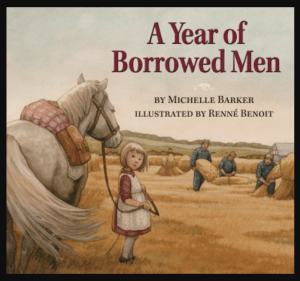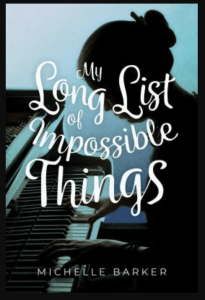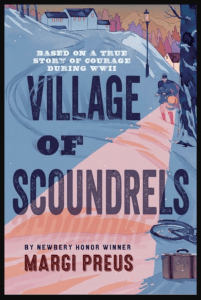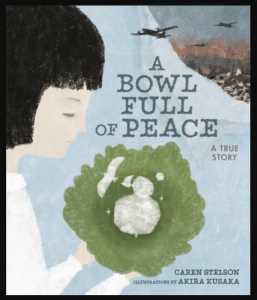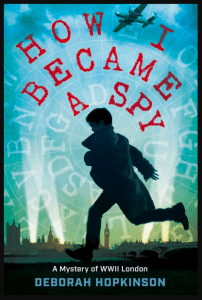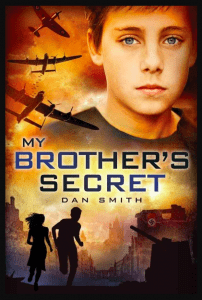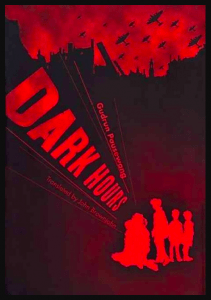Barker, Michelle. A Year of Borrowed Men. Toronto: Pajama Press, 2015.
Another brilliantly written story by the award-winning Michelle Barker. Set in World War 2 and based on her mother’s childhood, this picture book tells the story of three French prisoners of war sent to help on a farm in Germany. Despite the dangers from spying neighbours and stern policemen, the family treats the prisoners with care and kindness until the end of the war. Told from the point of view of a seven-year-old girl, there are bits of ironic humour that only older readers will notice: the village police officer is known for having become someone to fear; the invading Russians open all the barn doors and set even the animals free, leaving the family without any cows for milk and butter. The flowing language, the font of the text, and the design of the pages combine to create a story ideal for reading aloud. Tenderly illustrated in water colour and coloured pencils by the award-winning artist Renné Benoit and supplemented by an afterword and five black-and-white photographs, this picture book is highly recommended for readers 7 years old and up.
More stories from an author’s own life
